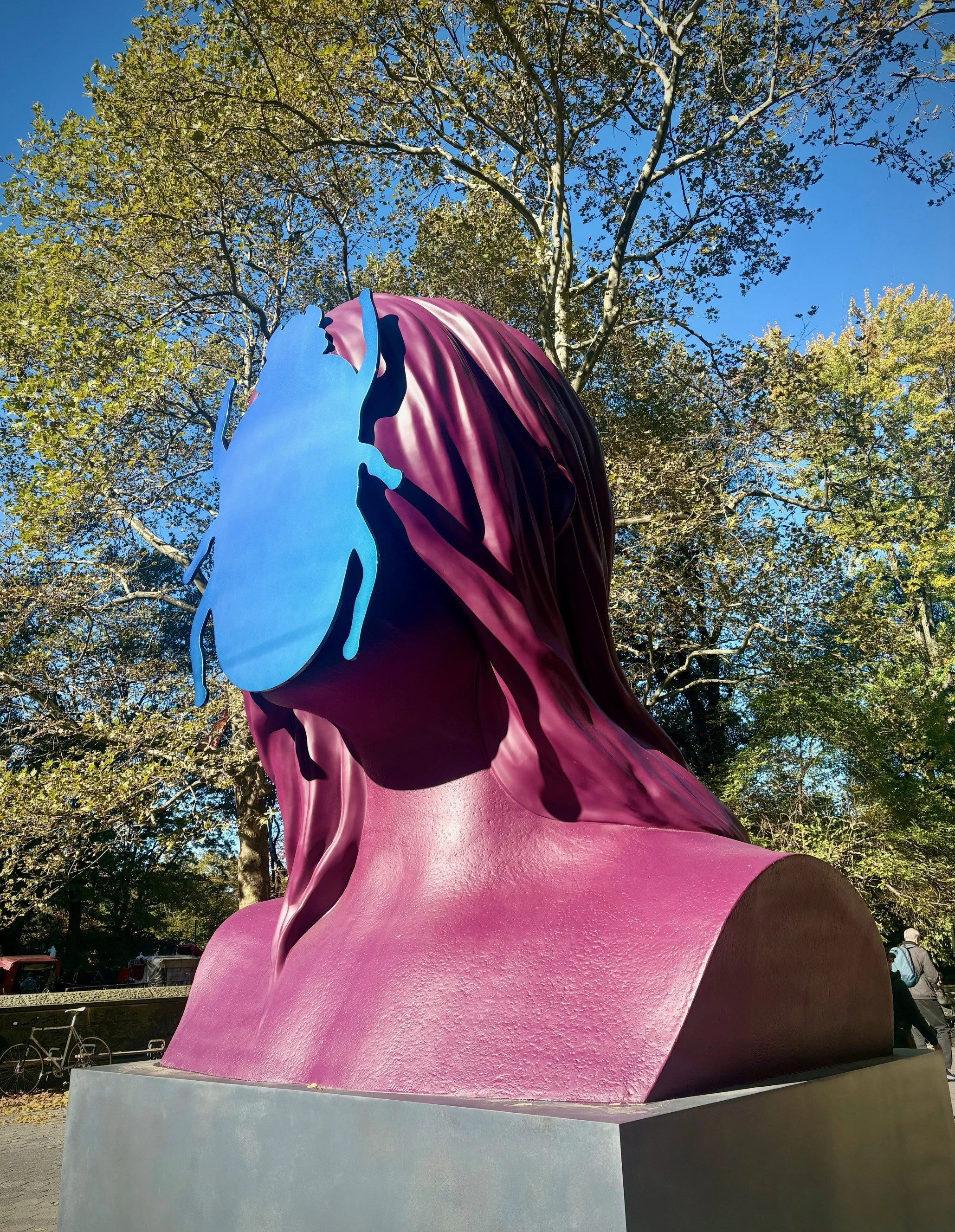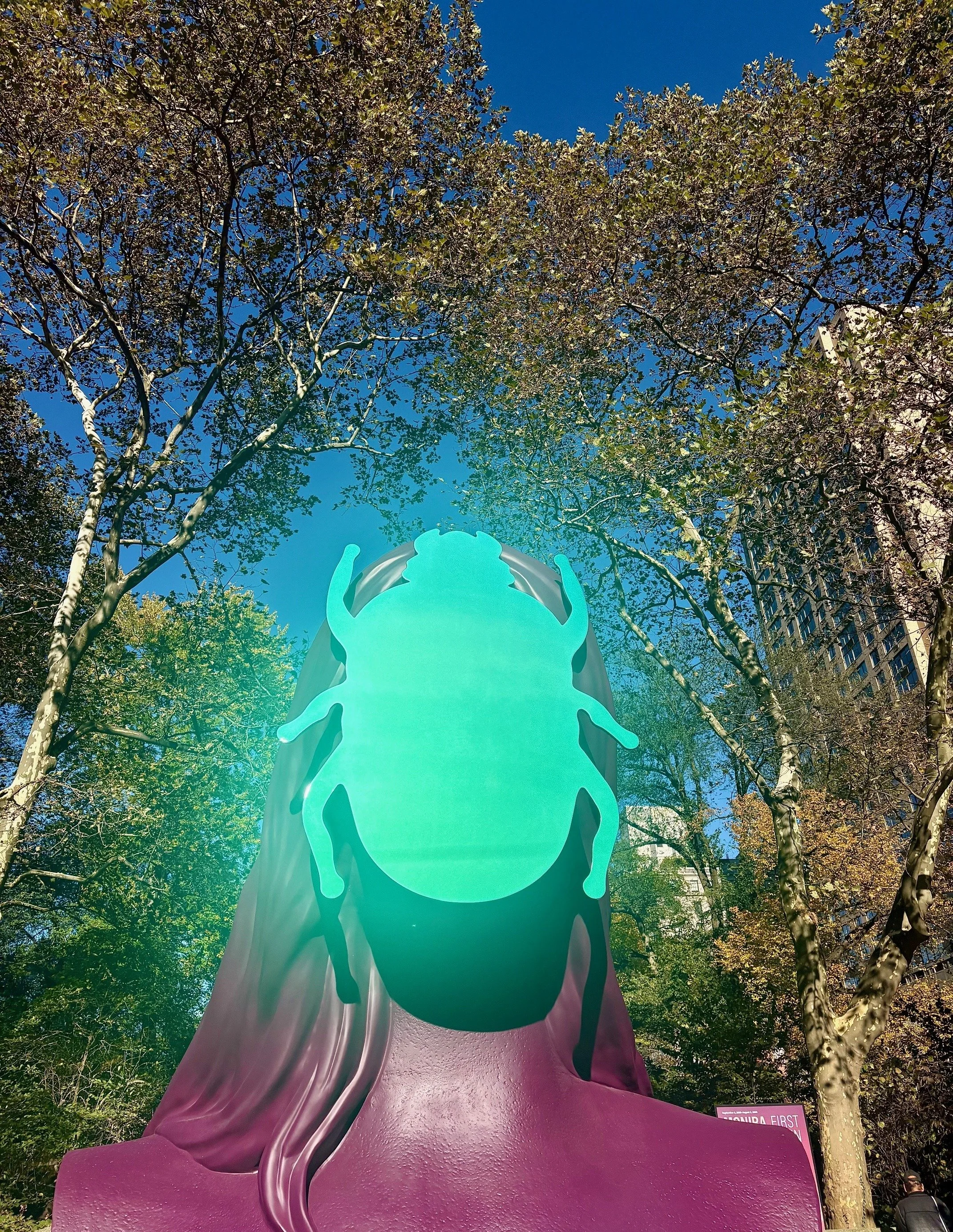While still adjusting to the weekend’s time change and in search of as much sunlight as we can gather, we wandered through New York’s Central Park in search of “First Sun”, a stunning aluminum sculpture by Senegalese artist Monira Al Qadiri. Positioned at the park’s southeast corner, the piece greets visitors with a mesmerizing play of color and light.
“First Sun” reimagines Khepri, the ancient Egyptian god of the rising sun, denoted by the deity’s scarab face, cast in shimmering purples and blues that shift with the sunlight. The sculpture’s reflective surface and ever-changing hues engage the viewer in a dynamic dialogue with the piece and the natural world which surrounds it.
Al Qadiri’s choice of location is extremely intentional. The sculpture serves as a symbolic gateway to one of New York’s most beloved green spaces, encouraging visitors to reflect on the transition from the stylized cityscape to the wild of the park. “First Sun” invites us to pause, reconnect with nature, and appreciate the balance between humans and the humble creatures that share our world.































